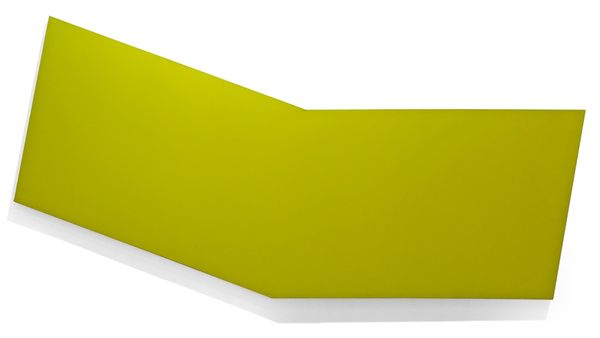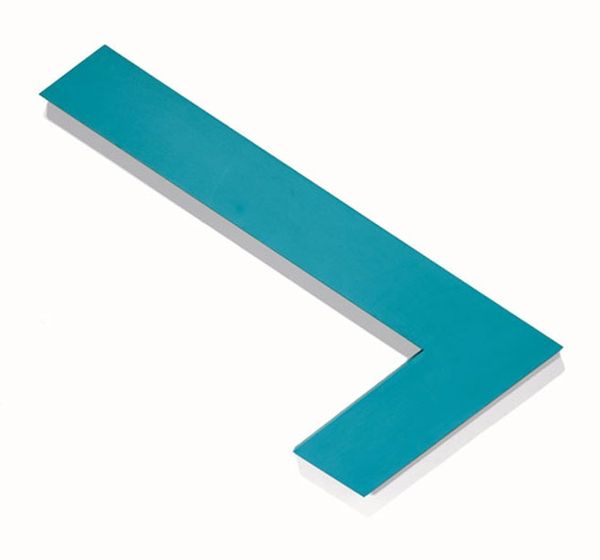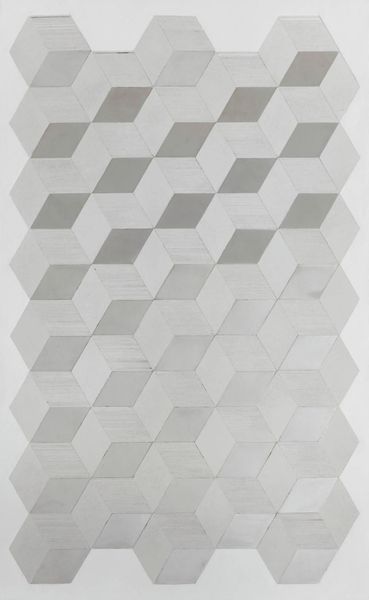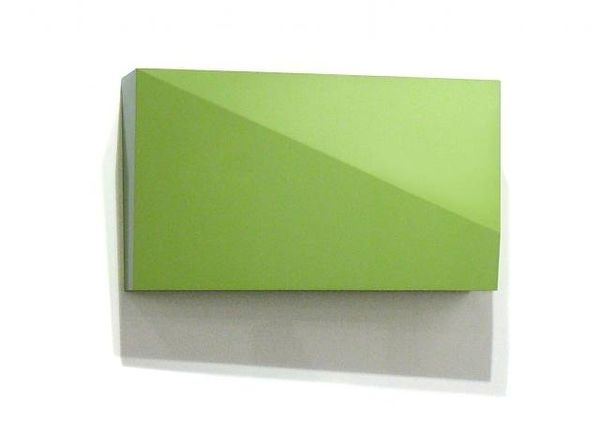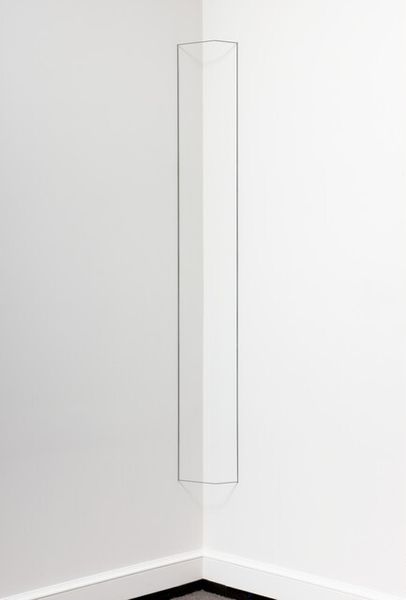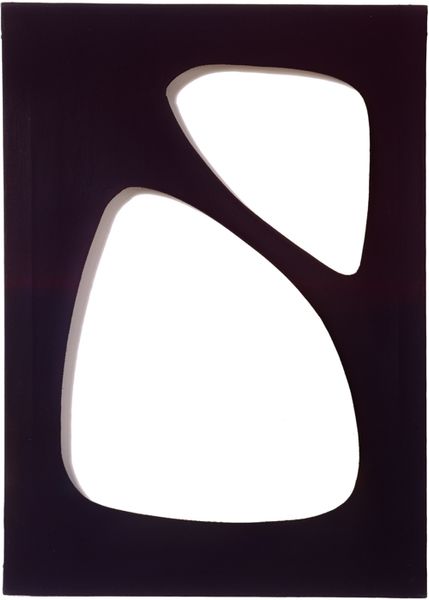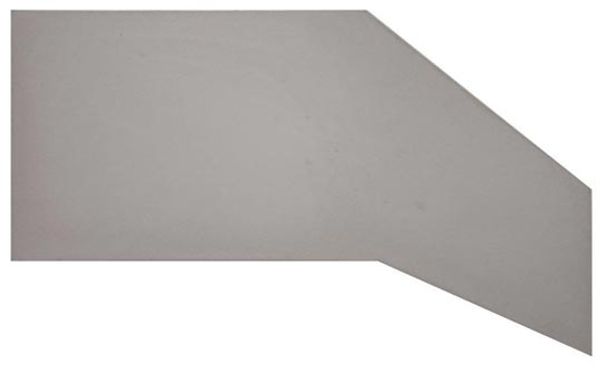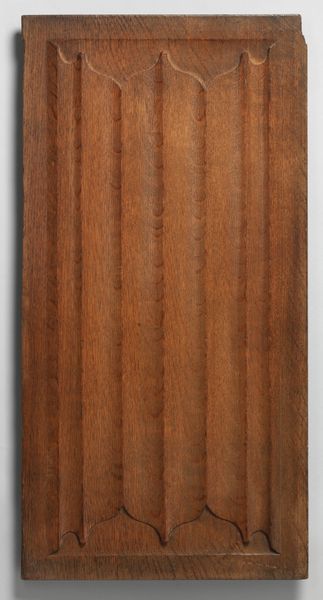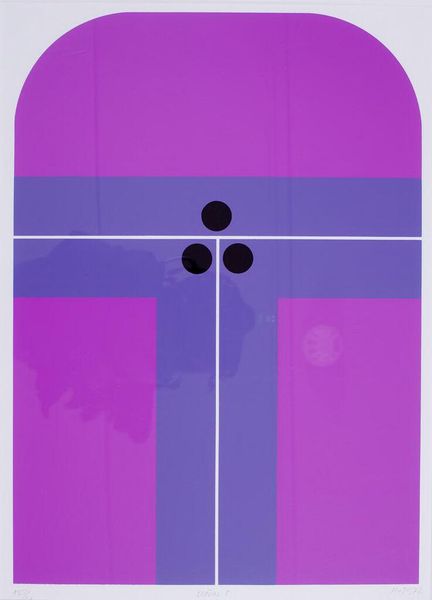
acrylic-paint
#
minimalism
#
geometric composition
#
virtual 3d design
#
minimal geometric
#
bright focal point
#
acrylic-paint
#
form
#
simple geometric shape
#
3d shape
#
minimal pattern
#
geometric
#
white focal point
#
geometric-abstraction
#
abstraction
#
pop-art
#
line
#
cutout
#
hard-edge-painting
#
geometric shape
Copyright: Ronald Davis,Fair Use
Curator: Ronald Davis's "Zig-Zag Times Two," painted in 1966. I'm excited to unpack the layers of context around this piece. Editor: Lavender, like a field right before sunset, but…angular? It's oddly calming for such a rigid shape. Curator: Right. And that juxtaposition is very much at the heart of minimalism. Emerging in the 60s, artists were consciously stripping away subjective expression in favor of industrial materials, clean lines, and a focus on the object itself. Davis pushes that boundary of flatness and the perception of space. Editor: Space. Yes. I feel like it’s about to slide right off the wall. Did he actually…bend the canvas somehow? Or is it just acrylic fooling me? Curator: The "illusion" is achieved with very deliberate use of color and form. There is no actual manipulation of the canvas. Davis's work operated within the realm of Hard-edge painting, playing with our understanding of shape and perception. These seemingly simple shapes really embody a rigorous, systemic exploration. Editor: It's more rebellious than I initially thought. This almost cold, detached aesthetic became incredibly charged during a turbulent time like the 1960s. Think about pushing back against abstract expressionism, its ego, its angst, its paint splatters! Curator: Precisely. When we see artists like Davis embrace these kinds of forms and palettes, we can see a rejection of the cult of personality and embrace an idea of democratic principles in the arts where materiality becomes a shared common ground, an antidote of sorts. Editor: An antidote that's almost…clinical. It feels like something that exists outside the messy realm of human emotions. Yet, the purple pulls me in anyway. Like a silent invitation. Curator: That's the beautiful tension in his work. By removing overt expressiveness, he actually allows the viewer more room for personal projection. Editor: Huh. Maybe the quiet ones are the loudest. Well, this zigzag made me think in different directions! Curator: I agree. Reflecting on "Zig-Zag Times Two" encourages us to consider the art's place within the shifts of mid-century art, while seeing its resonance still alive today.
Comments
No comments
Be the first to comment and join the conversation on the ultimate creative platform.

